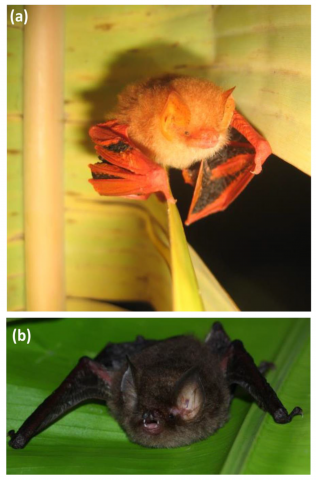Bioclimatic Envelopes for Two Bat Species from Sri Lanka
Bats perform critical ecosystem functions, including the pollination, seed dispersal, and regulation of invertebrate populations. Yet, bat populations are declining worldwide primarily due to habitat loss and other anthropogenic stressors. Thus, studies on bat ecology, particularly on environmental determinants of bat occupancy, are paramount to their conservation. High mobility, nocturnal behavior, and roosting site selection of bats make conventional surveys challenging. Moreover, little is known about geographic distribution, habitat suitability, and responses to climate change among tropical bat species. To bridge these research gaps, we applied ecological niche modeling to two Ceylonese bat species, Kerivoula malpasi and Kerivoula picta, to map their geographic distribution. Seasonal variations in temperature and precipitation were critical environmental predictors of bat distribution in general. Southwestern lowland forests contained the most optimal habitats for the relatively wide-ranging Kerivoula picta, while the central highlands provided the most suitable habitats for the narrow-ranging Kerivoula malpasi. No tangible changes in the highly suitable habitats were evident in response to projected climate change for either species. Yet, the optimal ranges of K. malpasi can become fragmented in the future, whereas the most optimal habitats for K. picta are likely to become spatially contiguous in the future. Habitat availability or fundamental niche alone is insufficient to reliably forecast species persistence, thus we caution against considering these two bat species as resilient to climate change. Our findings will enable the conservation authorities to initiate preemptive conservation strategies, such as the establishment of landscape-scale habitat connectivity and management of buffer zones around conservation lands. We also encourage conservation authorities to employ ecological niche models to map potential species distributions and to forecast range shifts due to climate change.

